Six Bells Red
On Friday 11th December 2020 during the Covid-19 pandemic Turning Landscape made and launched the worlds first ever exterior grade wall paint made from mine water ochre. Six Bells Red is now made in the former mining village of Six Bells. Alongside the wall paint Michael Harding (paints) made a series of 1000 40 ml tubes of high quality artists oil paint; Six Bells Burnt Ochre. These are for sale on this website, or if you make the journy to Six Bells we will give you a tube.
All proceeds from any sales we make are recycled back into the programme which supports local events, volunteers, production. If you run a public space, are a community group or project that would like to use either of these paints, you can apply to have some. Please email us.
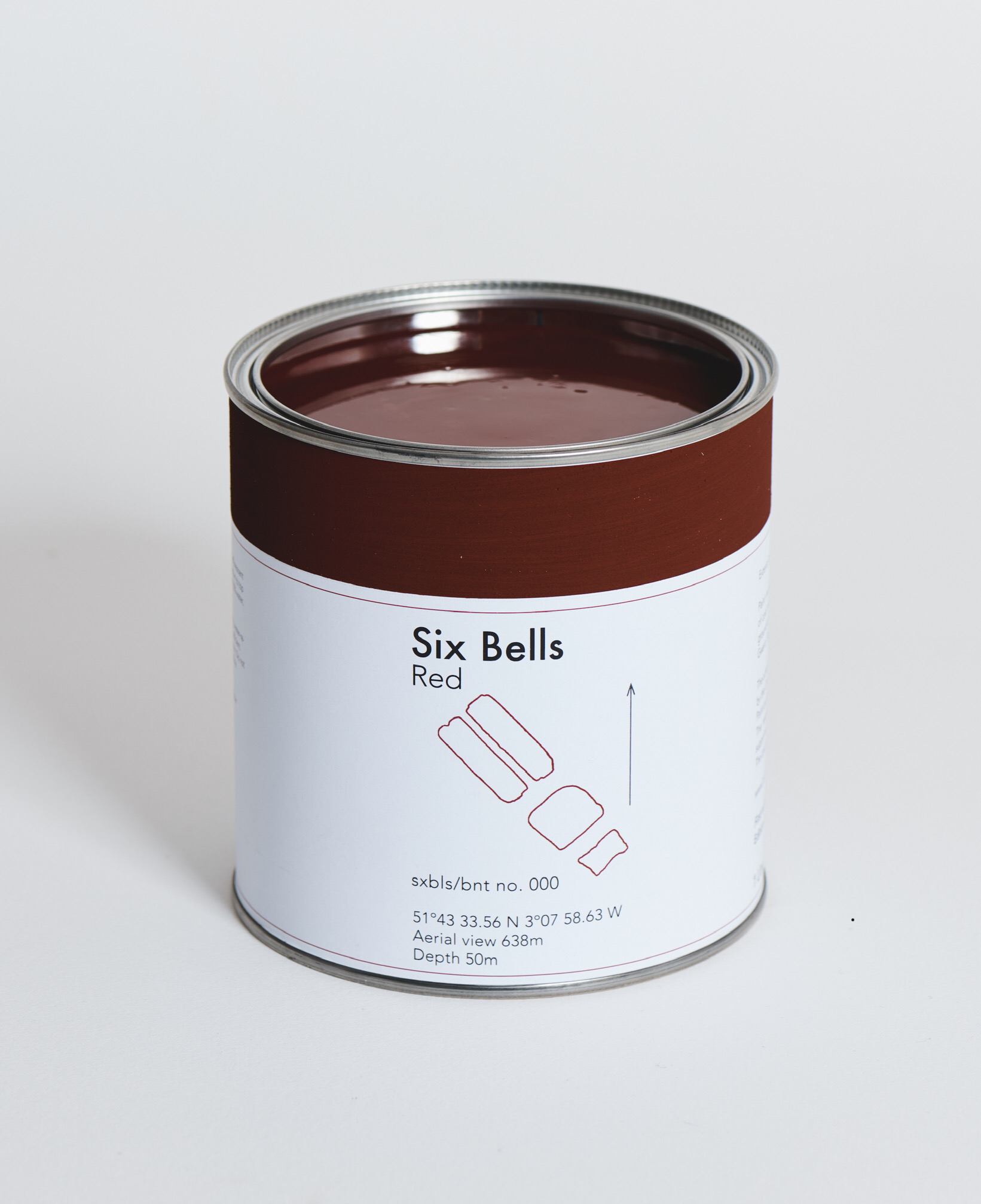
IL tin exterior grade wall paint Six Bells Red 1st ed. 2020
The pigment to make Six Bells Red has been specially created by burning the raw ochre at a specific temperature to create the distinctive red colour. This ochre forms as a residue during the treatment of polluting mine water making this a completely sustainable source of colour pigment.
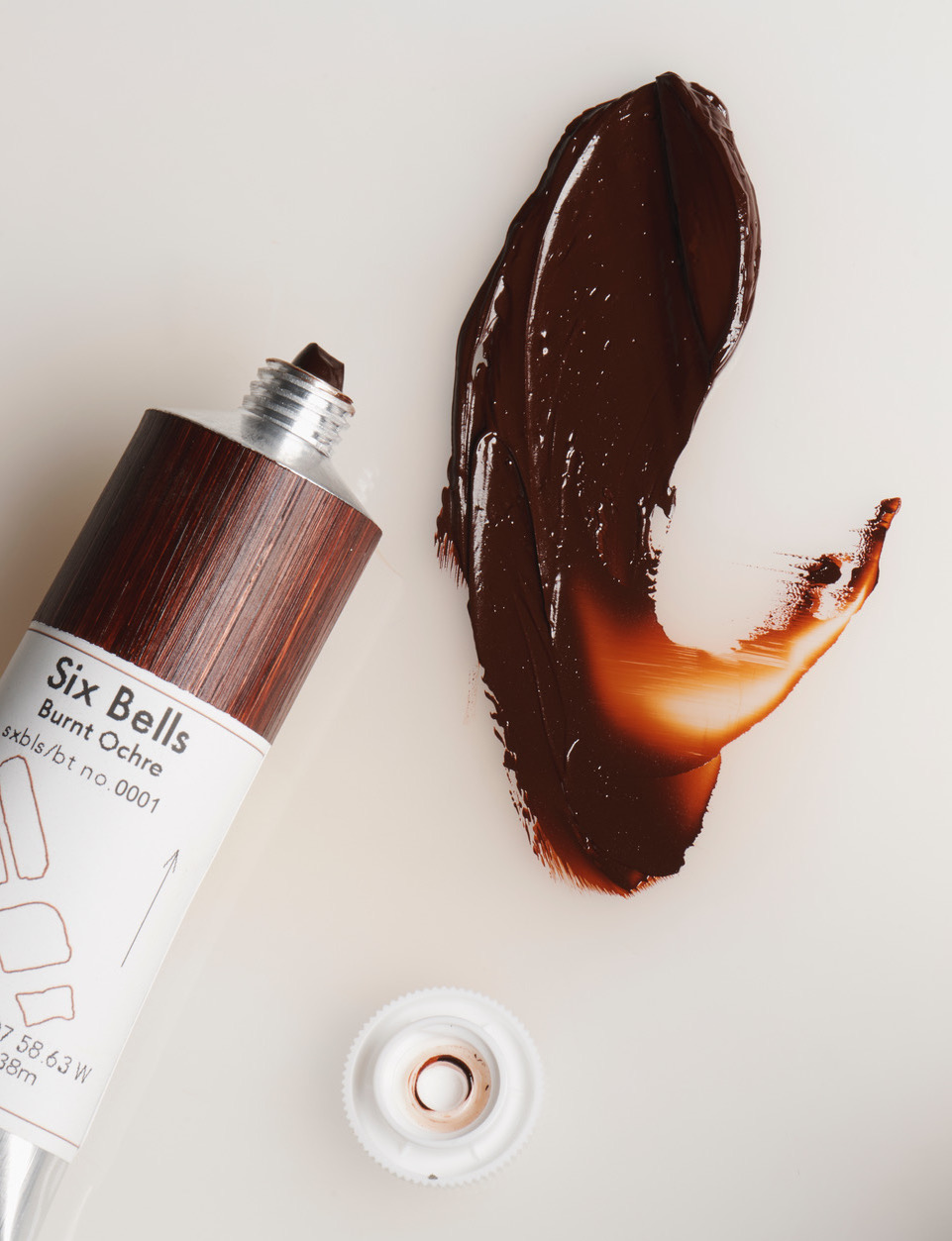
40ml tube of Six Bells Burnt Ochre artists’ oil paint 1st ed. 1000
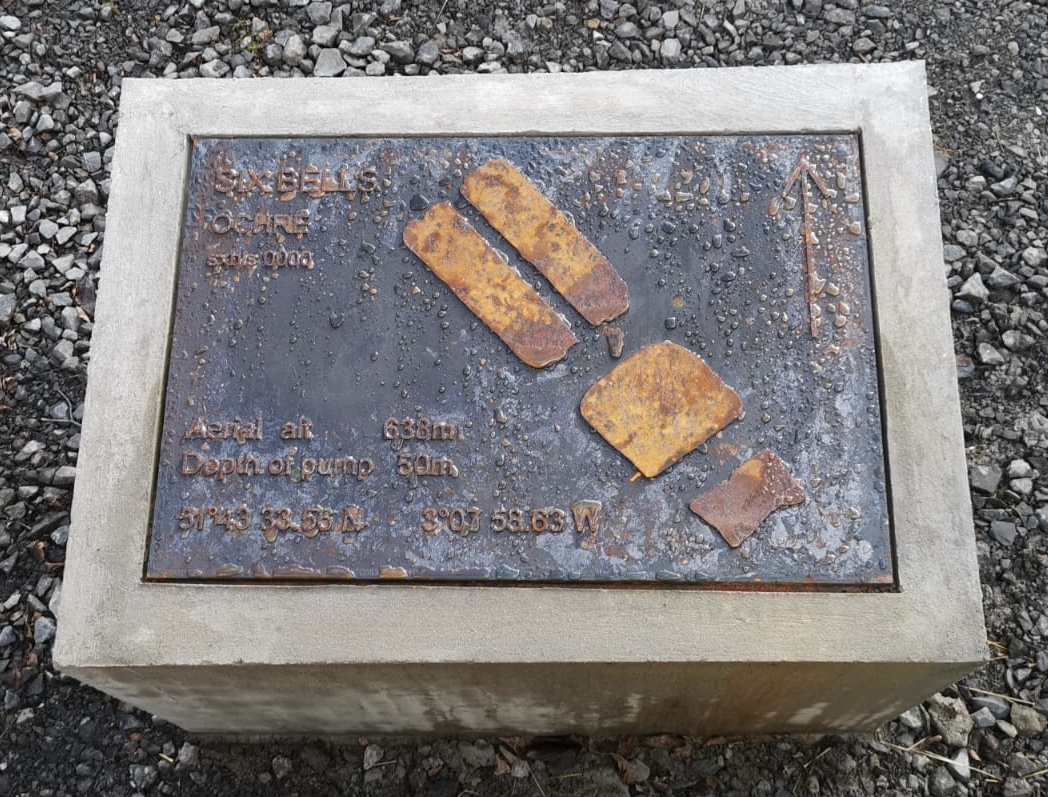
This cast iron marker plaque 2020 has been installed at the mine water treatment site designating the site as the permenat source of this colour.. The map will be visible from the footpath at the far north end of the perimeter fence.
Photos from the Launch Day..
Launch Event and Plaque Unveiling December 11th 2020 @ noon
The launch was held online with a physical presence at Six Bells Mine Water Treatment Scheme in South Wales, seeing the unveiling of a new public artwork - a map cast in iron marking, naming, claiming the site of the ochres’ formation.
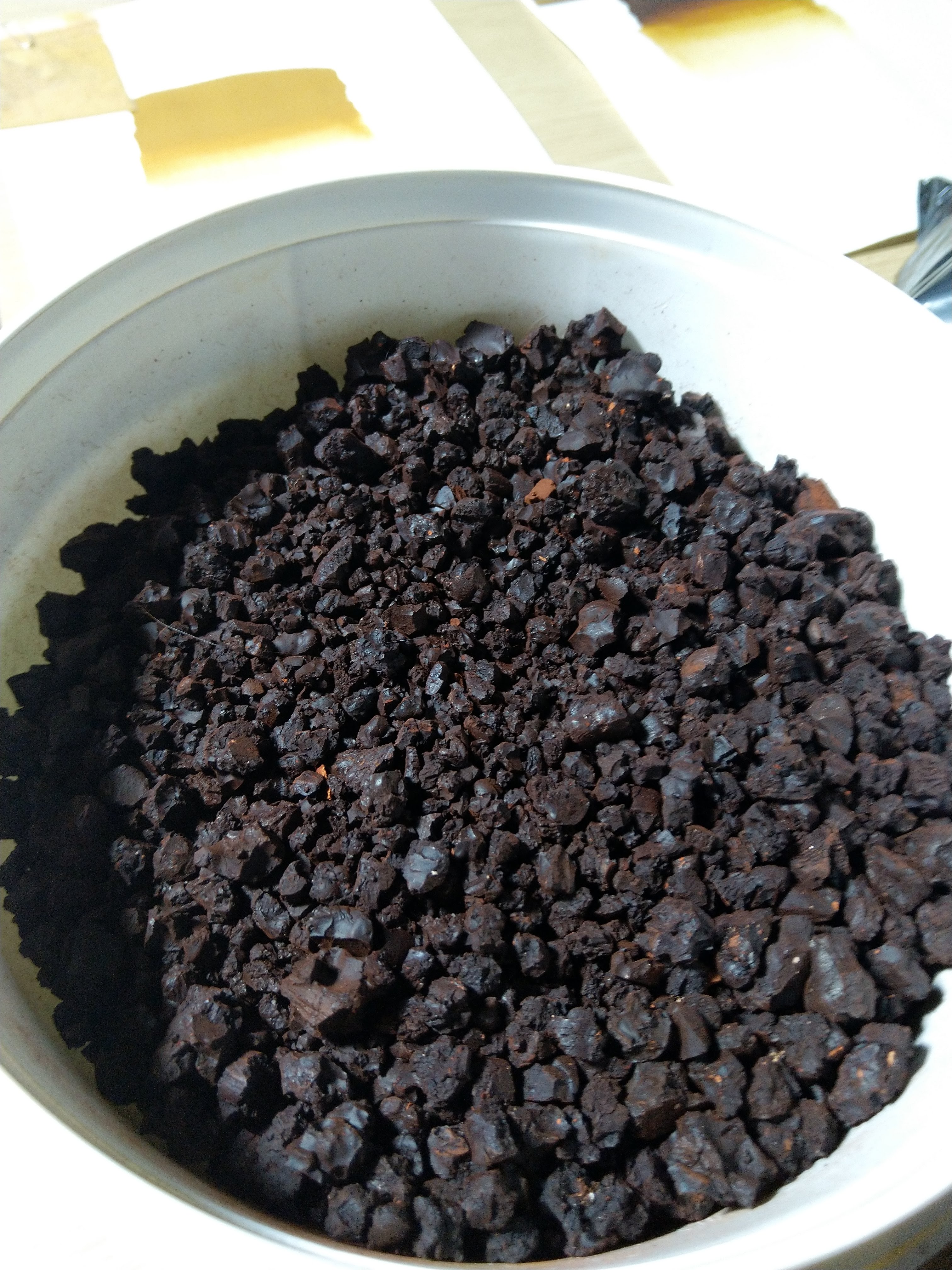
The ochre after it has been in the kiln, ready to be ground into pigment

Aerial photography of Six Bells mine water treatment scheme
The minewater treatment site viewed from Mynydd Llanhilleth
The minewater treatment site viewed from Mynydd Llanhilleth
Alun Davies MS unveils the plaque at Six Bells Mine Water Treatment Works
Dr Onya McCausland and former NCB surveyers and mine workers trace the route of minewater on vintage NCB plans in Jan 2020
A close up of the cast iron map the day after it was unveiled

The builders prepare to pour the concrete for the markers’s plinth
Onya in front of the newly painted wall
The wall in Ty Ebbw Fach that was painted live as part of the launch event on the 11 December 2020
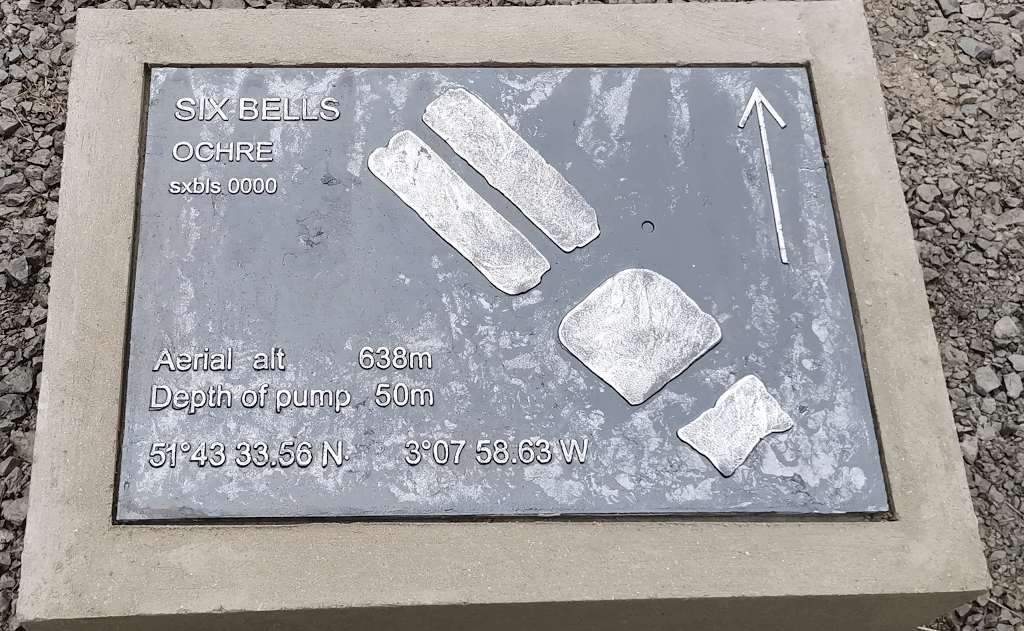
4K Video of Plaque Taken 23 December 2020
Background to Colour from the Mines
This project is led by artist Onya McCausland from UCL Slade School of Fine Art. Onya's practice develops an original and innovative approach to the role of the art object by making paint - including integrating its site of formation - as an artwork, in co-produced with manufacturers and members of the local ex-mining community. Paint in tubes and tins are considered as art objects and editioned for distribution and use by the public.
Onya McCausland developed the idea of recycling the coal mine sludge into paint while travelling around the country collecting samples of ochre from mine sites across former British coalfields in South Wales, Scotland, Lancashire and Yorkshire.
Further examples of Onya’s works can be found here: https://onyamccausland.com/ucl/
Six Bells is the first of five former coal mining sites around the UK that will take part in this project. The next one will be Saltburn near Middlesborough, followed by Cuthill West Lothian, Deerplay Hill in Lancashire, and finally back to South Wales Tan-y-Garn beside Ammanford.
It has been generously supported by the UK Coal Authority.
The project has been funded by the Leverhulme Trust, the Slade School of Fine Art and UCLInnovation & Enterprise, with support from Michael Harding.

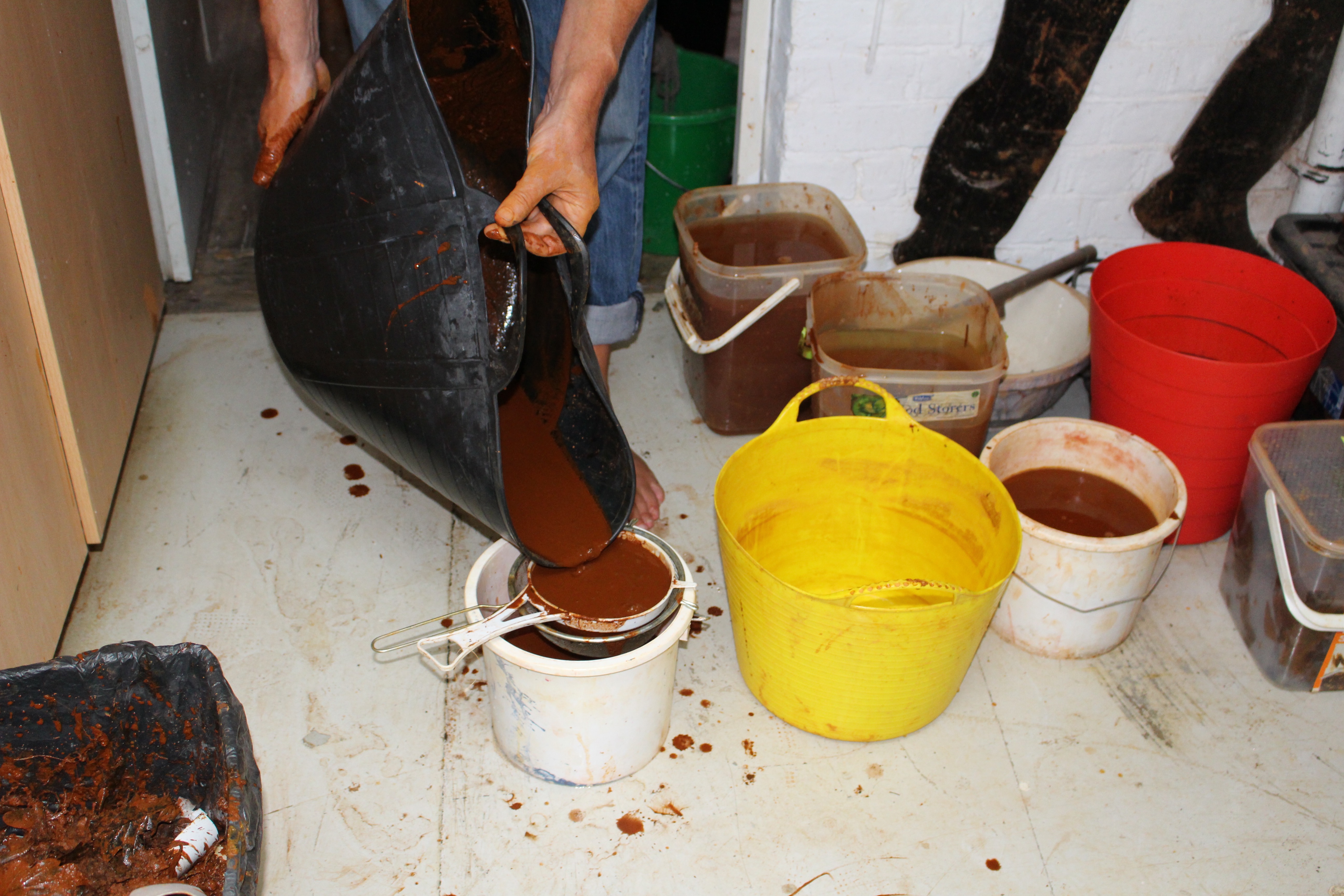

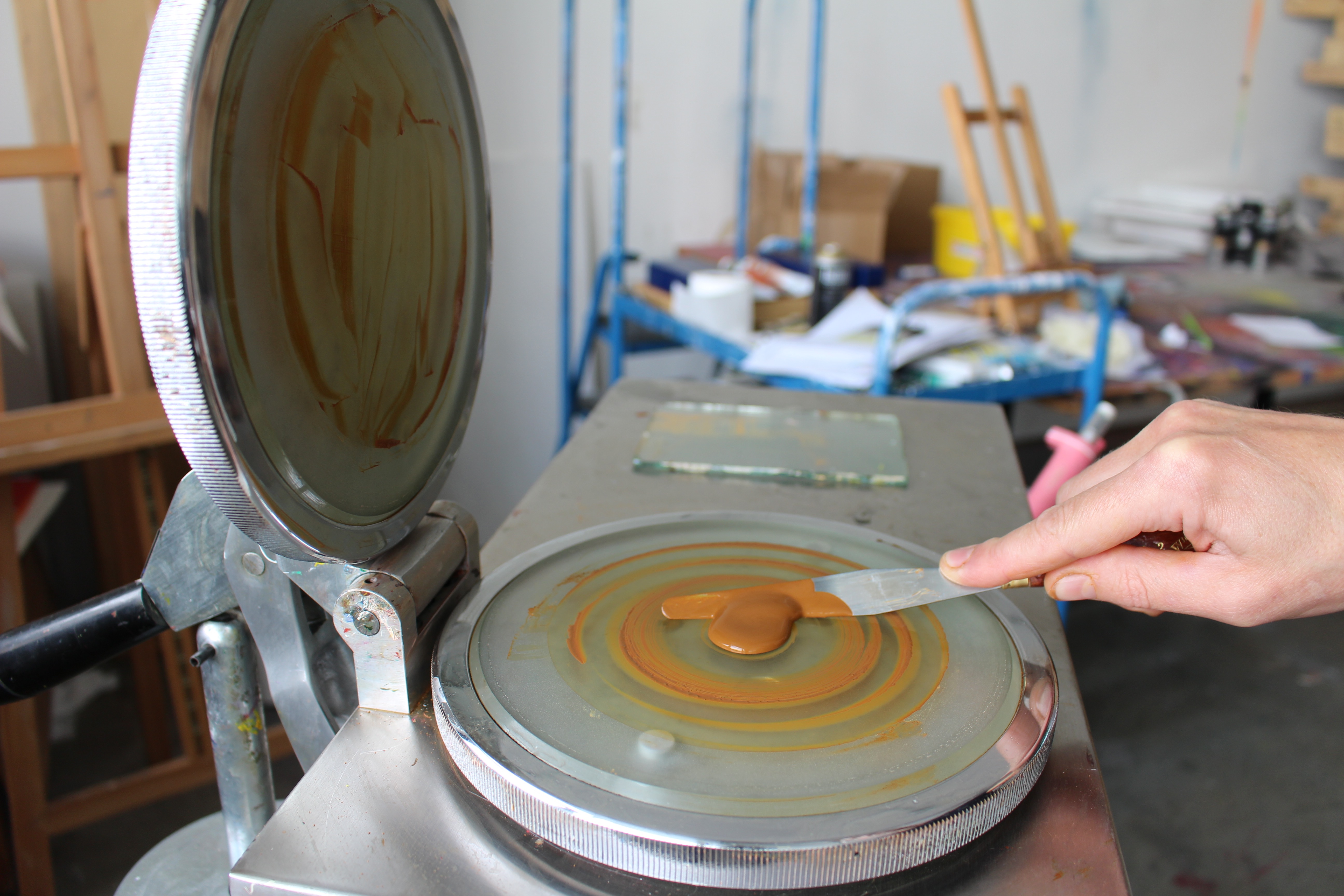
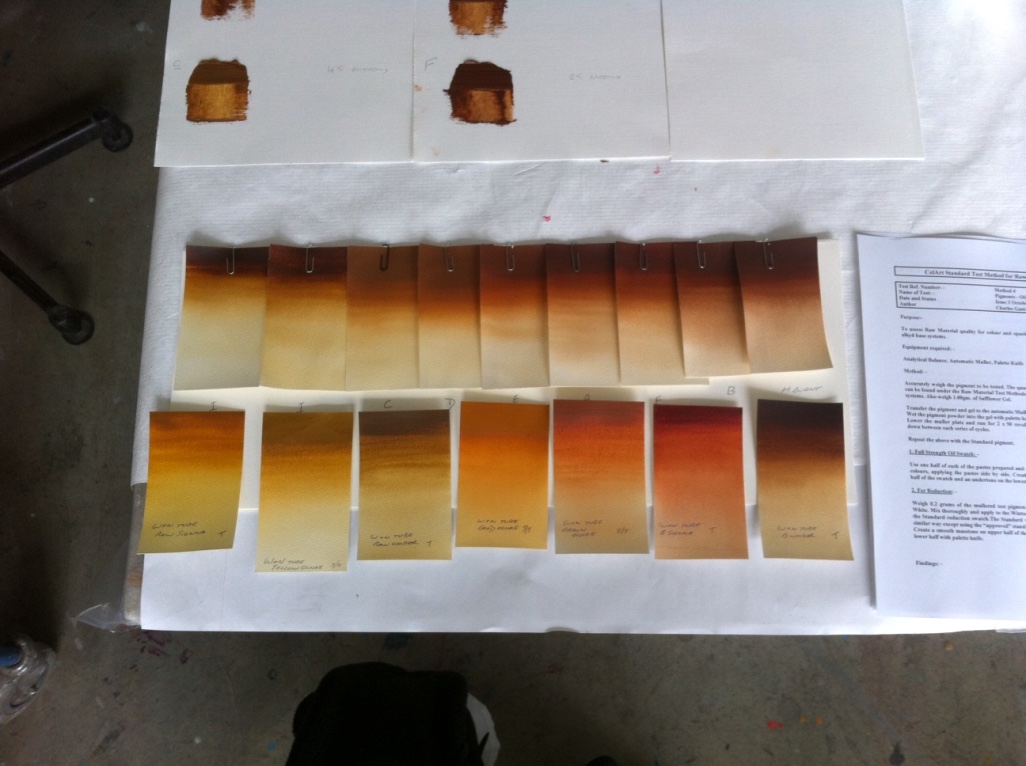
A Sustainable Pigment Factory
The focus of the work has turned to five sites where ochre is in formation - Six Bells and Tan-y-Garn mine water treatment schemes in South Wales together with three others in Scotland, Lancashire and North Yorkshire. These sites will become the first-ever functioning industrial sites to be associated with, and named as a sustainable source of colour: an incidental pigment factory. The sites and their colour will be recognised and acknowledged as part of the cultural, social and industrial history of the UK.
Water pumped from the flooding cavities of redundant coal mines inadvertently produces over 4000 tonnes of iron-oxide ‘ochre’ material as ‘waste’ ochre sludge every year. This largely untapped source of ochre presents an opportunity for the development of new earth pigment for use in paint that retains the identity of its material formation in the landscape. This is in contrast to currently available natural ochres from unsustainable unnamed sources across the globe.
The lakes of colour in the ground are the Mine Water Treatment Schemes run and managed by the Coal Authority. They inadvertently perform the production of ochre waste as part of the clean-up of polluting ground water and contaminated land. The lakes signify an event occurring in the post-industrial, post-carbon landscape and are defined and highlighted here as performing a cultural act and recognised as artworks.
Cultural Materials
The ochres are distinguished by the quality and indivudality of their colour that describes the particular conditions of their landscape context which are intricately linked to the history and legacy of the coal mining industry; to the hands that worked this industry. The use of the coal mine waste materials as pigment for paint recognises for the first time their position as part of the cultural landscape of the UK.
Over the past year we have been developing the project in consultaion with the particpants from the community at Ty Ebbw Fach / Six Bells Regeneration to collectively explore the value and significance of the materials for the people whose experiences are shaped by the mining landscape and its legacies. Beginning in January 2020 a number of public events have taken place, starting with meeting retired coal mine surveyors and workers who talked about their knowledge and memories of the mines.
This has been leading up towards the launch of the first ever mineral based wall emulsion paint and oil paint made in collaboration with two world class paint manufacturers local to the area.
The ongoing programme of work is developed through close collaboration with the Coal Authority.
Over the course of its evolution this work has had significant contributions from Dr. Ruth Siddall geologist and pigment analyst at UCL; Prof. David Dobson from the Department of Earth Science UCL, Jo Volley, Deputy Director (projects) Slade School of Fine Art and Spike Bucklow, Reader in Material Culture, University of Cambridge.
TLiC is the research site of artist Onya McCausland.
McCausland, O Turning Landscape into Colour 2017
For more updates on Colour from the Mines 2020 please follow the project on social media:
Website: https://onyamccausland.com/
Twitter: @turningland
Instagram: @onyawildermccausland, @onyamccausland


